Strathglass was known in Gaelic as Crom ghleann, it is the area around Upper Valley of the River Beauly. This land belonged to the Chisholm Clan. People here strongly adhered to the Catholic faith, even long after the “Reformation” of 1560. A time when catholic priests were forced into hiding and preached in secret places to their loyal congregation. People here spoke Gaelic and had strong connections to the land and their beliefs.
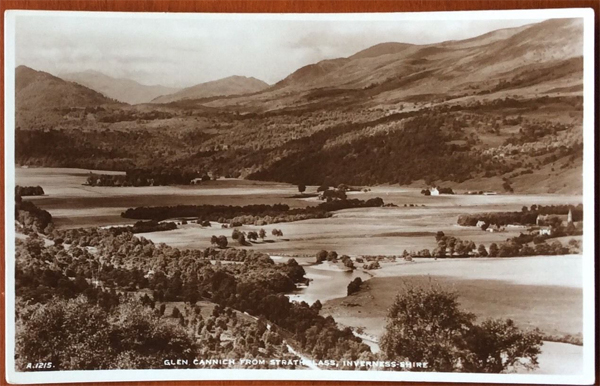
The Clan system was soon to end. The defeat of the Jacobite cause at Culloden in 1746 heralded the beginning of the end for the Clan system that had sustained the old way of life across the highlands. Retribution for supporting Bonnie Prince Charlie was swift. Raiding parties were sent into the straths and the glens throughout the highlands seeking out those who had supported the Prince. Strathglass suffered from a number of bloody incursions by Cumberland’s troops. The people who lived in this area were known to be Catholic and possible Jacobites. Now the British crown had control.
So families in the Strathglass area had survived Catholic persecution, then the hunting down of Jacobites but nothing prepared them for what was to happen next. In the latter half of the 18th century the infamous Highland Clearances saw people cleared from the land, often by their own kinfolk, to provide grazing for sheep. These were Gaelic people who expected to live and die on the same land their ancestors had.
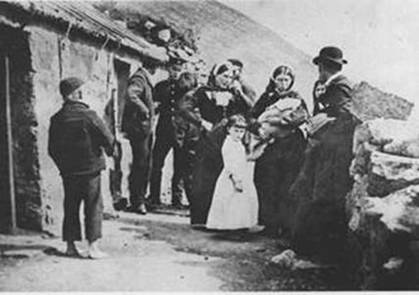
The population of Strathglass and the surrounding glens were decimated as they were forced to leave their homeland forever, many starting a new life in the new world. This was a harsh desperate time where human lives counted for nothing and land owners just wanted money from having sheep on their land. But in the midst of all this inhumanity were real heroes – in this case heroines – landowners fought against the Clearances.
The Chief of the Chisholms (Known as the “fair-haired Chisholm”) at this time was Chief Alexander XXIII with the support of Elizabeth and their only daughter Mary, he resisted the temptation to put the clansmen out of their homes and lease the Chisholm lands to southern sheep farmers. In doing so defied the orders and pressure coming from London.
When the chief Alexander died in 1793, he left his widow, Elisabeth the rental of a number of crofting settlements – ‘townships’ as they were called.
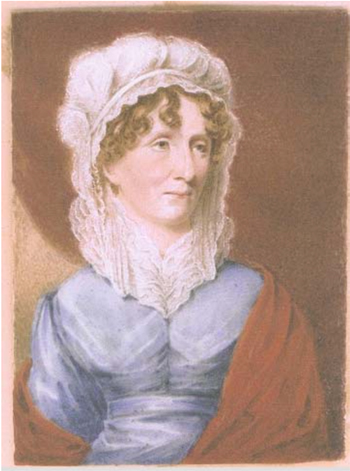
The chiefship of Clan Chisholm had gone to Alexander’s brother William. The widow Elizabeth and her only child, Mary, kept the tenantry intact for 33 years, never turning anyone off their land. Once, soon after Alexander’s death, the new chief came over to see Elizabeth at Comar together with many Southern men to try and intimidate her and arrange a deal for the best parts of the Glen to be turned over to sheep. Mary, a teenager, objected, and was sent to bed in disgrace. She crept down to the kitchen and told the servants what was afoot. By early next morning about a 1,000 men had gathered outside Comar House, and the southerners avoided trouble by slipping out of the back. When they looked back they saw the chief, carried on the shoulders of his clansmen being piped back from Comar to Invercannich House.
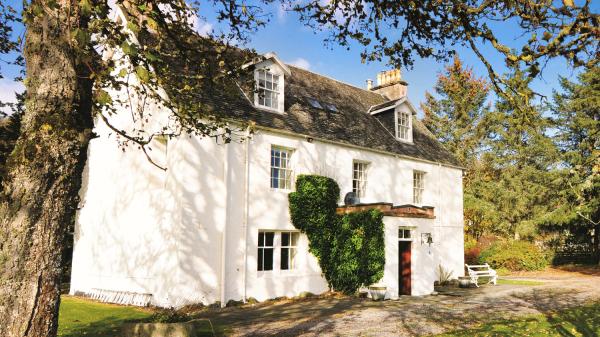
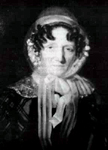 While Elizabeth and her daughter, Mary, did everything they could to stop the evictions of their tenants the chief William, the 24th Chisholm, began the clearances in Strathglass in 1801.
While Elizabeth and her daughter, Mary, did everything they could to stop the evictions of their tenants the chief William, the 24th Chisholm, began the clearances in Strathglass in 1801.
“By and bye, I will tell you how the tenantry were treated by the young Chief and his advisers. But I feel bound to tell you first, that repeated efforts were made by some of those who were acting for the Chief to get hold of the land still in possession of the widow. However, the great good sense of this noble- minded Edinburgh lady, and the sincere attachment of her daughter, Mrs Gooden, to her father’s tenantry stood firm against all the advances made to deprive her of the faithful Highland tenantry entrusted to her care.
For the long space of thirty-three years she kept her tenantry intact, never turned one of them out of a farm, nor did she ever deprive any man of an acre of land. As The Chisholm, her husband, left them at the time of his death in 1793, so they were left by his beloved widow at the time of her death in 1826. This excellent lady was well known and distinguished in the Highlands by the endearing term of “A Bhantigheama-Bhan”—the English equivalent of which is “the fair lady.”(From ‘From the Transactions of the Gaelic Society of Inverness’)
Many who rented on the Chief’s land were forcibly removed to make way for the sheep farming. Many of the evicted families fled across the Atlantic and settled principally in Nova Scotia and Cape Breton Island.
“They gave the names of some Strathglass farms to their freehold lands in their adopted country. In the Island there is even the county ot Inverness.” (From ‘From the Transactions of the Gaelic Society of Inverness’).
They sailed from Fort William to Pictou in Nova Scotia on the Sarah. During the passage, some fifty persons died of smallpox, the disease having been spread by a family called Robertson.
The first Chisholm families at Long Point, Judique would appear to have been those of Colin, William, Alexander, John and Alexander Ban. They too came to Pictou from Strathglass in 1801. They crossed over to Long Point a year later where they built grist and saw mills and, as soon as possible, established a school. Soon after, Alexander Chisholm was killed by a falling tree. He was the first person to be buried in the Long Point graveyard. Over his remains was mournfully sprinkled consecrated earth brought by the emigrants from Strathglass.
In Cape Breton Donald Chisholm, who left Strathglass for Nova Scotia in 1803 at 68 settled near Antigonish, in mainland Nova Scotia wrote a poem called ‘When I was young in Strathglass’ (‘Bah mi ogam a Strathglais’) in it he expresses his sorrow at having to leave home in old age and his anger at the clan chiefs for betraying the old social order.
When I was young in Strathglass
I had no thought of leaving,
Now that the gallant men have gone, I too, shall leave
The coward who now rules us
Evicted his own, few remain
He prefers sheep in the hills to a kilted retinue.
(From The Last of the Celts by Marcus Tanner)
William, the chief, was always in delicate health, and the management of the estates fell largely into the hands of his wife, whom the natives of Strathglass to this day blame for having cleared the whole clan out of their native glen. In the period of one year, half of the clan were evicted.
After William’s death, his son was still a minor; but his wife Elizabeth continued with the evictions for one sole purpose – to pay for her son’s (the future 25th Chisholm) education at Cambridge.
Bishop Chisholm had pleaded with her to end the evictions:
“Oh! Madam, you would really feel if you only heard the pangs and saw the oozing tears by which I am surrounded in this once happy but now devastated valley of Strathglass, looking out all anxiously for a home without forsaking their dear valley; but it will not do, they must emigrate!”
She promised the tenants, who had gone to her for help, to come up with a solution. But she never did. Two sheep farmers, Thomas Gillespie and William MacKenzie, had convinced her that she should continue with the “improvements” to her land.
The evictions continued with the Cambridge educated son, Alexander. He followed in his parents’ footsteps and totally depopulated Strathglass. It was said that only one Chisholm remained. Bard and poet in the old Gael tradition, Donald Chisholm, wrote these words:
“Our chief is losing his kin! He prefers sheep in the glens, and his young men away in the camp of the army!”
A man of the time described Alexander as wanting nothing so much as to replace all his people, “his family from the beginning of time,” with sheep. And, unfortunately, it was true.
One house belonging to a man called William Chisholm was especially singled out. Chisholm was a tinker, and probably a squatter, but this does not condone the act. In the house was the mother of Chisholm’s wife, a bed-ridden woman of over ninety. When Sellar was told that she was too ill to be removed, he replied: “Damn her, the old witch; she has lived too long. Let her burn!”’
The house was set on fire and by the time she was pulled out, the blankets she was covered with were also burning. She was set down in an adjoining shed, which only with great trouble they were prevented from burning also. The old woman died within the week.
The news of this, and other acts, began to ripple through the country. Sellar was taken into custody and a trial began on 23 April 1816. The jury consisted of 15 men; eight were local landed proprietors, two merchants, two tacksmen, and one a lawyer. Most were magistrates and Justices of the Peace. Sellar was charged with culpable homicide.
When Lord Pitmilly came to sum up, he instructed the jury to bear in mind the character of the tinker, Chisholm, versus the character of the accused. The jury were quite clear what he meant and returned a verdict of not guilty in fifteen minutes.
Sellar’s work as a factor for Stafford would be remembered as Bliadhna an Losgaidh, the year of the burnings.
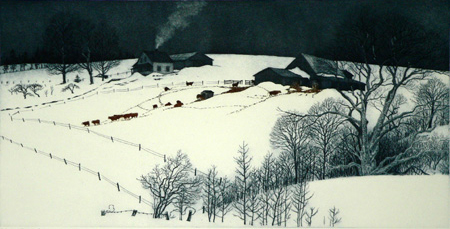
Sadly Elizabeth passed away in 1826. Her nephew, The Chisholm, Alexander William, having succeeded his father in 1817, succumbed immediately, and Round 2 of the Chisholm clearances commenced.

Thank you – this gave me great insight into family background I had not previously known
Mi bisabuela era Janet Chisholm nació en 1853, su padre Alejandro
Casada en Argentina con Andrew Mc Harg